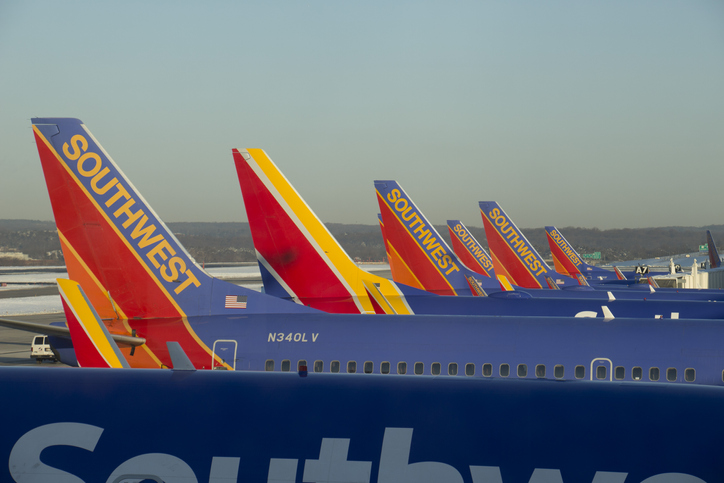Southwest Airlines Co and Brazil’s Gol Linhas Aereas said they had grounded a total of 13 Boeing Co 737 NG airplanes after U.S. regulators ordered urgent inspections last week.
Southwest said it had grounded two planes, while Gol said it had grounded 11. Both airlines are major operators of the 737, including the NG variant and the more recent MAX, which has been grounded for months after two deadly crashes.
The U.S. Federal Aviation Administration last week told aircraft operators to inspect 165 Boeing 737 NG airliners for structural cracks within seven days after the issue was found on a small number of planes. Nearly all the 165 planes were Southwest aircraft, officials said.
Southwest, which did not find any issues in the “vast majority” of the planes, said it “removed the two aircraft from our operation and reported the findings to Boeing and the FAA. The aircraft will remain out of our schedule until the issues have been fully resolved.”
Gol said in a statement that it had grounded 11 planes where it found “evidence of the need to replace a specific component, whose characteristics were not compliant with the standards set by the maker.”
The Brazilian airline said the fleet change would affect 3% of its passengers between Wednesday and Dec. 15. Gol has a fleet of 115 Boeing 737 planes, setting aside its grounded MAX planes, according to its website.
Last week, the FAA said more planes will eventually be inspected.
The order covers a total of 1,911 U.S. registered planes. The inspections can be done visually and take about an hour per airplane.
The cracks are on what is known as the “pickle fork” — a part that attaches the plane’s fuselage, or body, to the wing structure and manages forces.
The inspections look for “cracking of the left and right hand side outboard chords of frame fittings and failsafe straps,” the FAA said last week, warning the issue “could adversely affect the structural integrity of the airplane and result in loss of control of the airplane.”
Southwest, United Airlines and American Airlines Inc are among carriers that fly the 737 NG. The NG includes the 737-600, -700,-700C,-800, -900, and -900ER.
American Airlines said none of the company’s 737-800 fleet “fall into the seven day requirement.” The company anticipates around 80 737-800 aircraft will require the inspection in the next eight months.
The 737 NG is the third-generation 737 and the version before the now-grounded 737 MAX, which is not affected by the issue. Boeing said earlier it has been in contact with 737 NG operators, but added that “no in-service issues have been reported.”
Aircraft with more than 30,000 cycles must be inspected within seven days, while planes between 22,600 and 29,999 cycles must be inspected within 1,000 cycles, which typically correspond to the number of flights.
United said it also does not fall under the seven-day time frame and 80 of its airplanes are “between the 22,600 and 29,999 cycles” and will be inspected as required.
While minor aircraft cracks are not unusual, an industry source said it was slightly unusual for cracks to appear on the pickle fork before the end of an airplane’s lifespan, which is more than 90,000 landing and takeoffs, or “flight cycles.”






